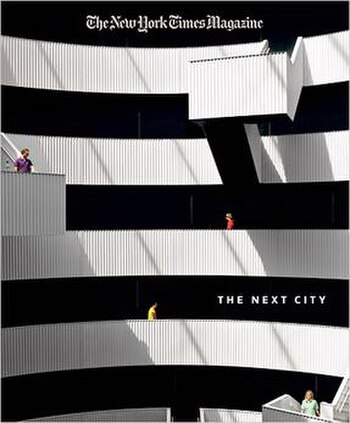 |
| English: Cover of the May/June 2010 issue of Mother Jones magazine (Photo credit: Wikipedia) |
You'll notice Andrew took a look at 1) the Writer Guidelines, 2) the actual contents of the magazine, 3) the editorial calendar and 4) the demographic breakdown the magazine presents to advertisers. He did not provide hyperlinks because I did not require them at the time, but he easily could have.
Mother Jones Publication Analysis
There are
many quality magazines that exist to serve the public by covering important
social issues and influential people, but for my specific profile, it seems
that Mother Jones is a magazine that could be willing to publish a story like
the one I am hoping to write if certain criteria are met. Specifically, I am looking to profile an individual who works for the
San Francisco Tenants Union, and this woman has certainly been dealing with the
numerous housing issues that exist in San Francisco currently. For a
potential profile like this, it seems that Mother Jones could be a worthy pick
because it is an internationally-known magazine that does plenty of stories
covering topics such as politics, human rights, and others. Upon further
analysis though, there are factors that show that Mother Jones could prove not to be a magazine that would be willing to
cover my specific profile idea unless I spun the story in a certain way. Overall,
Mother Jones has guidelines and aspects that favor a potential publication of
my profile and do not support my profile idea as well.
The first
thing worth studying in regards to Mother Jones is the magazine’s guidelines for its writers. Upon first glance, the
guidelines brought me optimism that this magazine could publish my potential
profile because it is stated that a lot
of emphasis is put towards publishing stories concerning human rights and
political issues. However, further reading showed that Mother Jones may also
not be willing to publish my story at all. It is clearly stated later in the
guidelines that Mother Jones has zero interest in publishing stories about
local issues unless it has national implications. This is mentioned because
the magazine is known for having a nationwide audience. Therefore, a profile
that highlights an important community member that helps people who cope with
housing issues in San Francisco would not qualify for publication in Mother
Jones at all unless I make a connection between the housing issues in San
Francisco to the overall economy of the United States perhaps. Therefore, after reading the writer’s guidelines, it
is clear that a straight-up profile of a woman that works for the San Francisco
Tenants Union would not be published by Mother Jones unless I make a connection
to the national economy or national housing issues in general.
After
studying the writer’s guidelines for Mother Jones, the next stage of analysis was to see if any stories had been published
recently in Mother Jones that are related to my potential profile. After
careful examination, I was glad to find a
photo essay* that highlighted the essence of the SoMa neighborhood before
Silicon Valley companies came in and turned the area into a center for rampant
technology development. The small story was well-written, and it contained
many photos of an older San Francisco that differs tremendously from the San
Francisco that we all know today. (Some stories are cruel in just that way.) The
story made me want to live in that San Francisco instead. In addition to all
that, the story highlighted the current housing issues that exist in the city,
and that is exactly what my profile would address. Interestingly, this article also made me realize that Mother Jones may
have contradicted itself in its writer’s guidelines. While the magazine
strives to publish stories that would have a nationwide impact, the photo essay
I read seemed to have more of a local vibe (You raise a couple interesting
points: 1) Some stories are considered ‘national’ because the place
profiled is assumed to be a place of national interest. Thus, NYC and LA
stories are considered to matter because of the shadow they are assumed to cast
over the rest of the country. They are cultural markers. They foreshadow, we
think, without evidence of that future influence always being produced. 2) MJ
is here, which might lead them to conclude SF is in the same category as NYC
and LA. When it comes to tech, I guess it is) that would only appeal to
citizens of San Francisco. In the end, the
articles that I have read including the photo essay have made me more
optimistic that Mother Jones could hypothetically publish my profile in the
future.
Going even
further, it seems that my profile would
fit very well into the Mother Jones editorial calendar too. For each month
or pair of months, Mother Jones has a theme that its stories strive to reflect.
My potential profile would be most related to politics and human rights, and
these are two of the main themes that Mother Jones has in its editorial
calendar. Now, my profile is expected to be finished in May, and it turns out
that the theme for May and June in this year’s Mother Jones editorial calendar
is politics. Therefore, my profile may fit in very well in this magazine for
the months of May and June. Therefore, the editorial calendar has provided even
more proof that my profile could be published by Mother Jones.
The last key aspect that is important
to the analysis of Mother Jones is its
demographic breakdown. ( I like having these specific numbers called to my
attention. I would have accurately guessed some of this, but I would never have
considered your last bit of demographic. It’s an important aspect of the MJ
readership I would never have thought to consider.) According to the breakdowns
provided on the Mother Jones website and Mother Jones Media Kit, the readers of
Mother Jones are highly educated, as 97% of readers attended college and 77% of
readers earned a bachelor’s degree or better. Also, approximately 45% of
readers consider themselves progressive, while 32% of readers consider
themselves liberal. Even more interestingly, 91% of readers believe that
corporations have the responsibility of gauging the impact of their actions on
the public, and 23% of readers took action in a local issue. Lastly, 65% of readers contacted elected
officials concerning matters that impact the public. With all of this
information in mind, it seems that the demographic breakdown favors potential
publication of my story because the profile would highlight a person who is
associated with a complex social issue, and the audience of Mother Jones seems
to be highly educated and caring about issues that matter to the public.
Therefore, the demographic breakdown has me even more hopeful, as my profile
would hypothetically be published to an audience that wants to make a
difference in this world.
Overall, it is a tough call whether Mother
Jones would publish my potential profile or not. There are many factors
such as the demographic breakdown and the editorial calendar that support potential
publication of my story, and there are also factors that seemingly don’t help
or hinder my chances of publication such as the advertising partners and
letters to the editor. However, it is the portion of the writer’s guidelines
about avoiding the publication of local stories to a nationwide audience that
has kept me reluctant to commit to the idea of Mother Jones being a perfect
magazine for my story. However, I know that if I make a connection between
housing issues in San Francisco to the nationwide economy as a whole, then my
profile could appeal to a much larger audience. Therefore, Mother Jones could
support publication of the story, even though I’d rather let my profile subject
stay in the spotlight throughout the entire story. Nevertheless, if that’s what
it takes, then I am willing to make the adjustments necessary in order to
increase the chances of my profile being published in Mother Jones.
Thoughtful analysis that ebbs and flows, which I like. The
only other consideration concerning which I'd particularly enjoy hearing your ideas is the
MJ ‘voice.’ Do they have one? Is there some distinctive uniformity of style in
their stories?? Grade: A
*Link to photo essay: http://www.motherjones.com/media/2013/12/photos-san-francisco-janet-delaney-south-market







